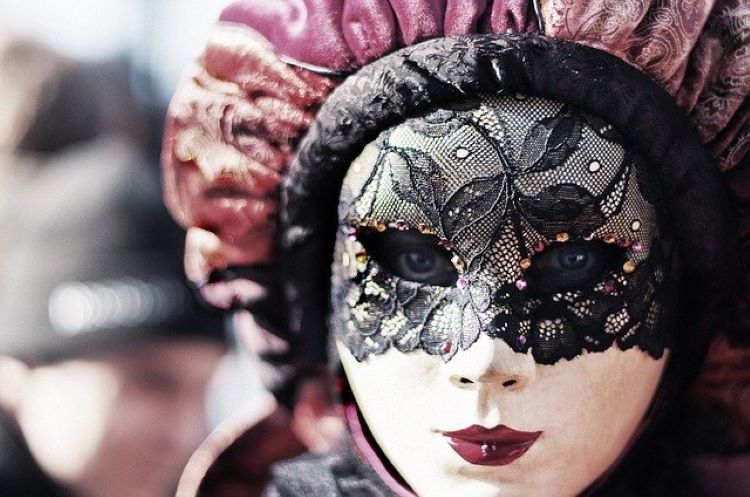What are the theatrical genres?
Mark Murphy – the choreographer and director of OOTW Tour – creates a whole new genre in musical theatre.
- Major forms: Tragedy and Comedy, as the main ones; also: drama, tragicomedy, and auto sacramental.
- Musical theater: Opera, zarzuela and sainete, mainly.
Tragedy: Traditional dramatic genre, opposed to comedy. It is a work of terrible subject and disastrous outcome, in which illustrious or heroic characters take part. The great epoch of tragedy corresponds to classical Greece and Rome (Aeschylus, Sophocles, Euripides, Seneca…), then reborn in England (Shakespeare) and in Renaissance France (Corneille, Racine).
Comedy: Traditional dramatic genre, opposed to tragedy. Its outcome is always pleasant and optimistic and its purpose is to achieve, through public laughter, the recognition of certain vices and defects, criticism of certain people and institutions; the entanglement and equivocation of the situations are characteristic of this comic theatrical genre. Its peak was reached in Greece in the 5th century BC and its most characteristic authors were Aristophanes and Menander.
Drama: Theatrical genre, in which an action of life is represented, through the dialogue of the characters, who deal with serious and deep issues. Its remote origin is found in the grape harvest festivals, celebrated in honor of Dionisios, with dances and Coric dances performed during the holidays. It progressively evolves towards dialogue, while the genres of tragedy, comedy and satire are being articulated and differentiated; reaching its maturity in the 5th century BC.
The first Greek theaters were built with a circular space, destined for the movements of choirs and groups of dancers; in the center of which is the altar with the statue of Dionysus. Behind the orchestra the scene is located and the spectators are placed in a wide hemicycle equipped with bleachers, for whose construction on many occasions the slope of a hill is taken advantage of.
Regarding the contents of the dramas, Aeschylus will begin to represent stories of heroes, while the theater that preceded him only dealt with the figures of the gods

Historical drama: the one whose subject of its speech is historical figures, episodes or processes.
Elizabethan drama: takes place in Great Britain, under the power of Elizabeth I Tudor.
Lyrical Drama: one in which poetry and depth of the text have preeminence over the action.
Liturgical drama: developed throughout the Middle Ages in Spain and France; its materialization is in the autos sacramentales.
Drama of passion: it is commonly performed on Good Friday, outdoors.
Social drama: It cares about the dignity of man and extols the struggle of the proletariat.
Satirical drama: In Greek theater, bufo genre, in which the main characters are satyrs and fauns.
School drama: theatrical activities carried out in European universities, during the seventeenth century.
Abstract drama: The one that in its development does not adhere to the logic of conventional human actions; thus the theater of the absurd.
Tragicomedia: Work that participates in the tragic and comic genres. Such is the case of Host of Plautus, the first author to use this name. Its development from the Renaissance, reached great relief in the 18th and 19th centuries; like melodrama and romantic drama. The genre is characterized by the undifferentiation of the social class to which the characters belong – aristocracy and people? and by the use of different languages.
Self Sacramental: Representations of biblical episodes, mysteries of religion or conflicts of a moral and theological nature. Initially represented in the temples or porticoes of the churches; the oldest is the so-called Auto de los Reyes Magos. After the Council of Trent, numerous authors, especially from the Spanish Golden Age, wrote orders destined to consolidate the ideology of the Counter-Reformation, the following stand out: Calderón de la Barca, Tirso de Molina, Lope de Vega, etc.
Entreme: Comical theatrical piece, in a single act and humorous plot, emerged in Spain in the 16th century; the hors d’oeuvres were represented in the intermission of the days of a play. In the 15th century, the term “entremés” was applied in the celebrations of courts and palaces, to different tournaments and dances that were performed accompanied by lyrical choirs.

Step: Dramatic piece of short duration, simple subject and comic treatment, that formerly was interspersed between the parts of the comedies. El paso, named for Lope de Rueda in the 16th century, is considered the precursor of the appetizer and is characterized by its realistic language.
Monologue: Monodrama – dramatic piece performed by a single actor, even when several characters intervene; it is a parliament that is longer than usual in dialogues, delivered alone or in the presence of other characters.
Fars: Comic piece destined to make people laugh. The difference between farce and comedy lies in the matter; that in the first, contrary to the second, it does not necessarily have to be convincing or close to reality.
Vodevil: Comedy lightened with songs and dances, of a markedly frivolous, happy character and love affair, with marked intrigue and entanglement; very popular in France in the 18th and 19th centuries.
Opera: Theatrical performance throughout the development of which the different characters sing; in it the dramatic action is combined with the intervention of the orchestra, dance, speech, scenery and other elements. According to its style and content, one can speak of serious opera, comic, idyllic romantic, legendary, etc. The origin of opera is located in Italy at the end of the 16th century, when the musician Emilio Cavalieri and the librettist Laura Guidiccioni, premiered The Satyr, Fileno’s Desperation and The Blind Game, considered as the first pieces of this genre.

